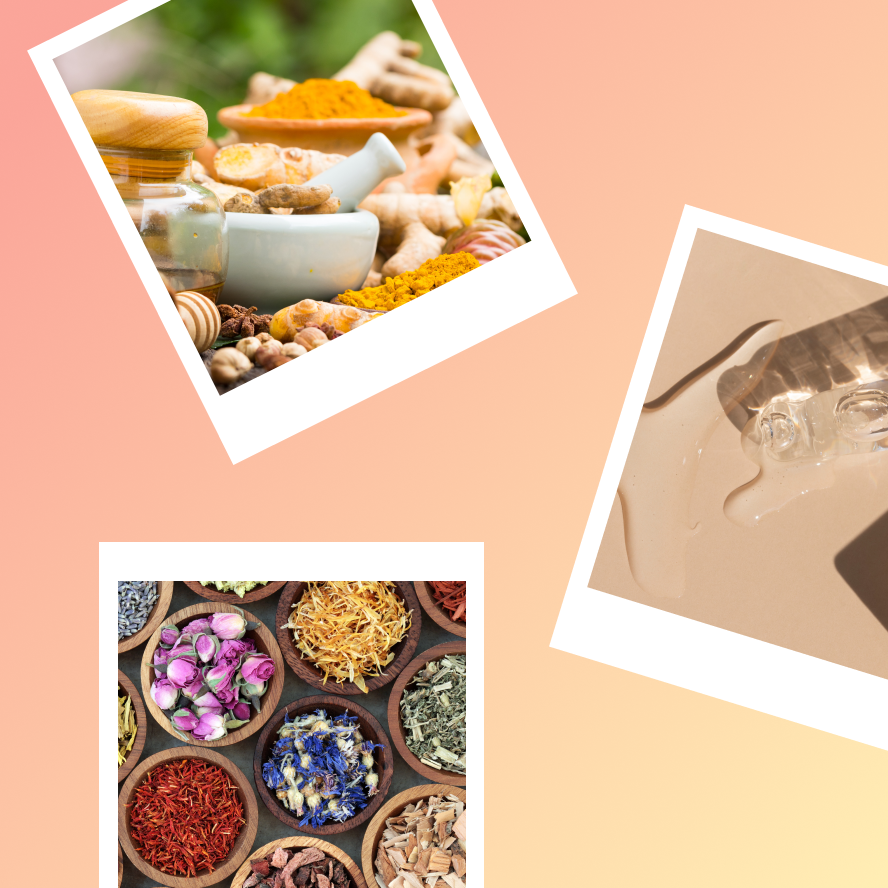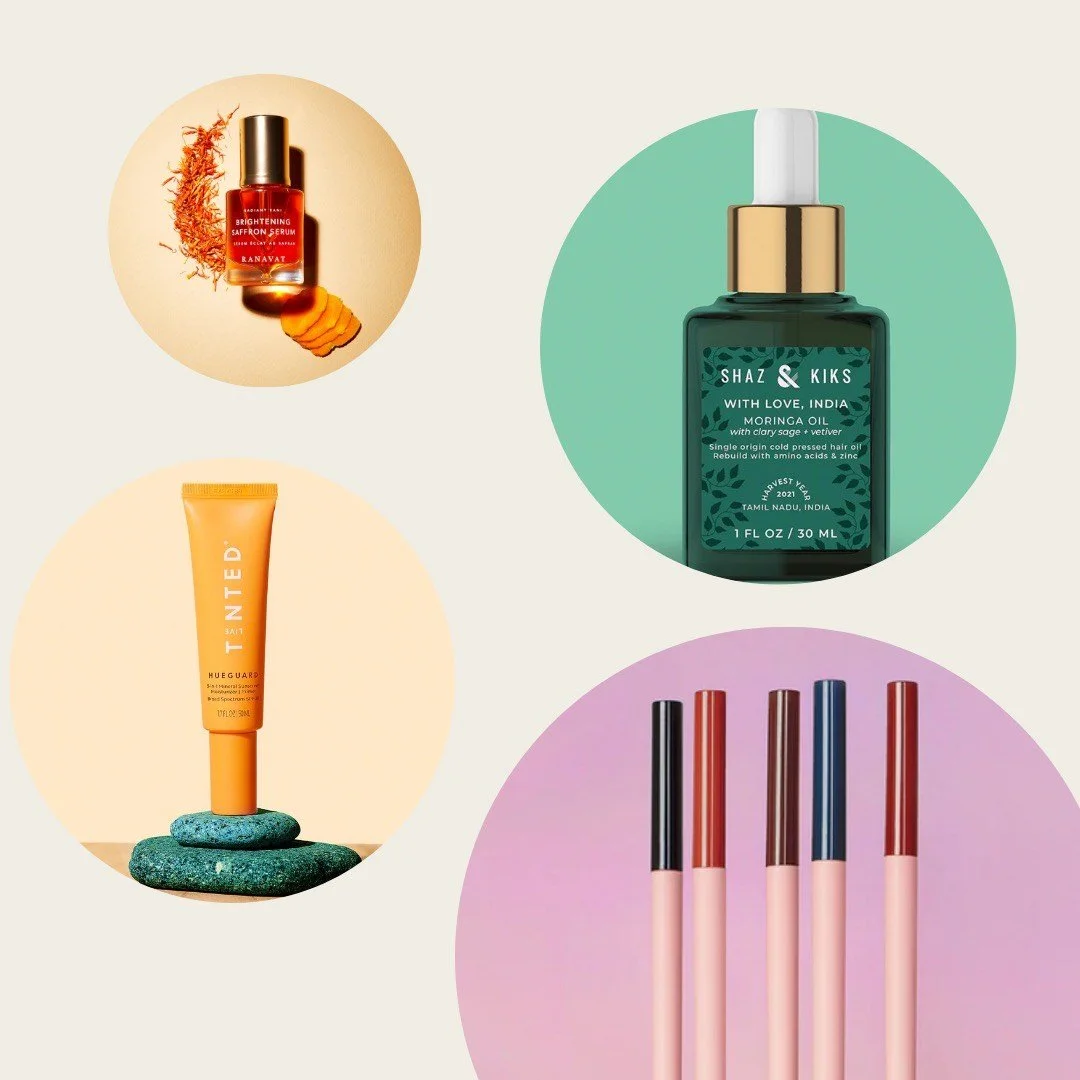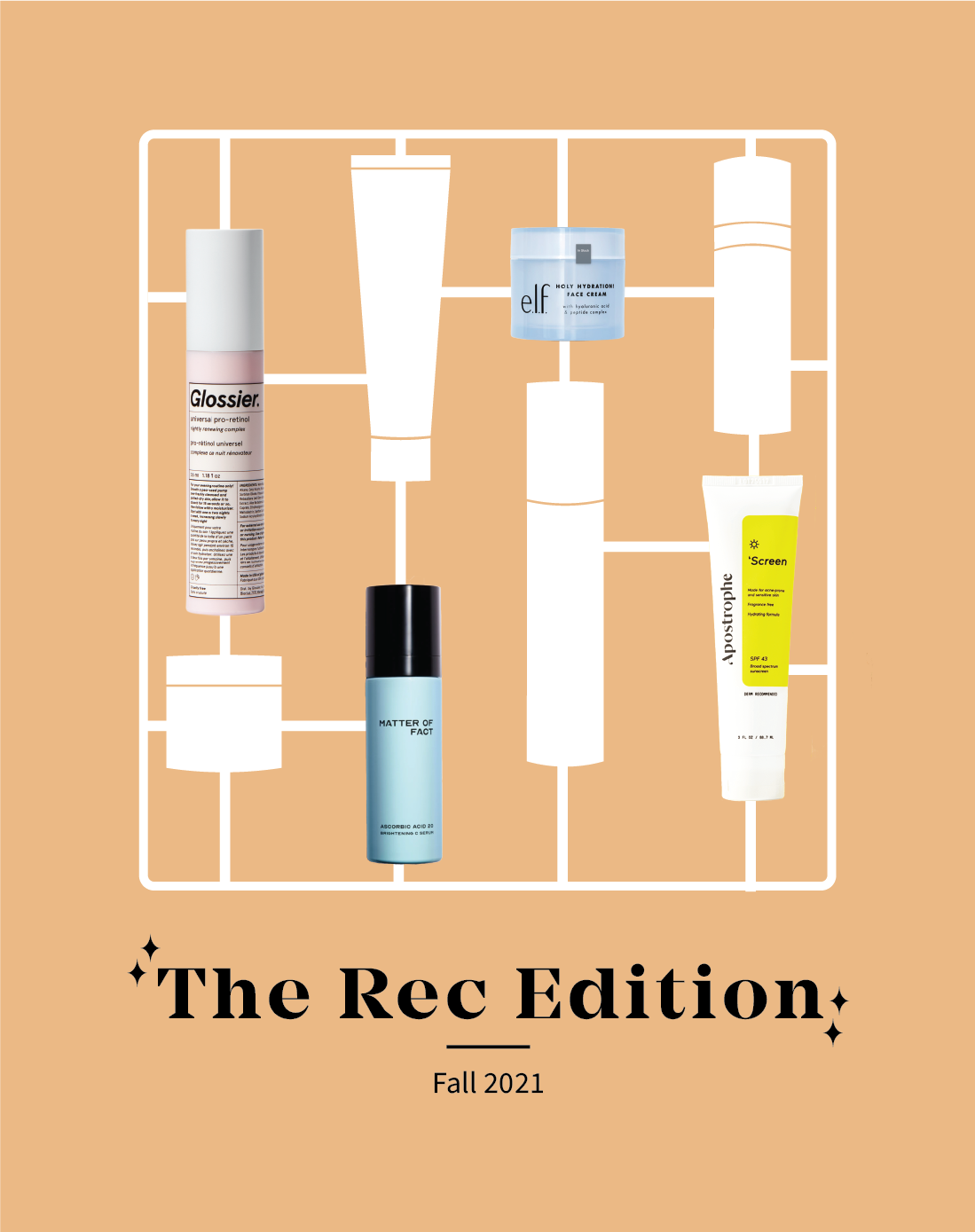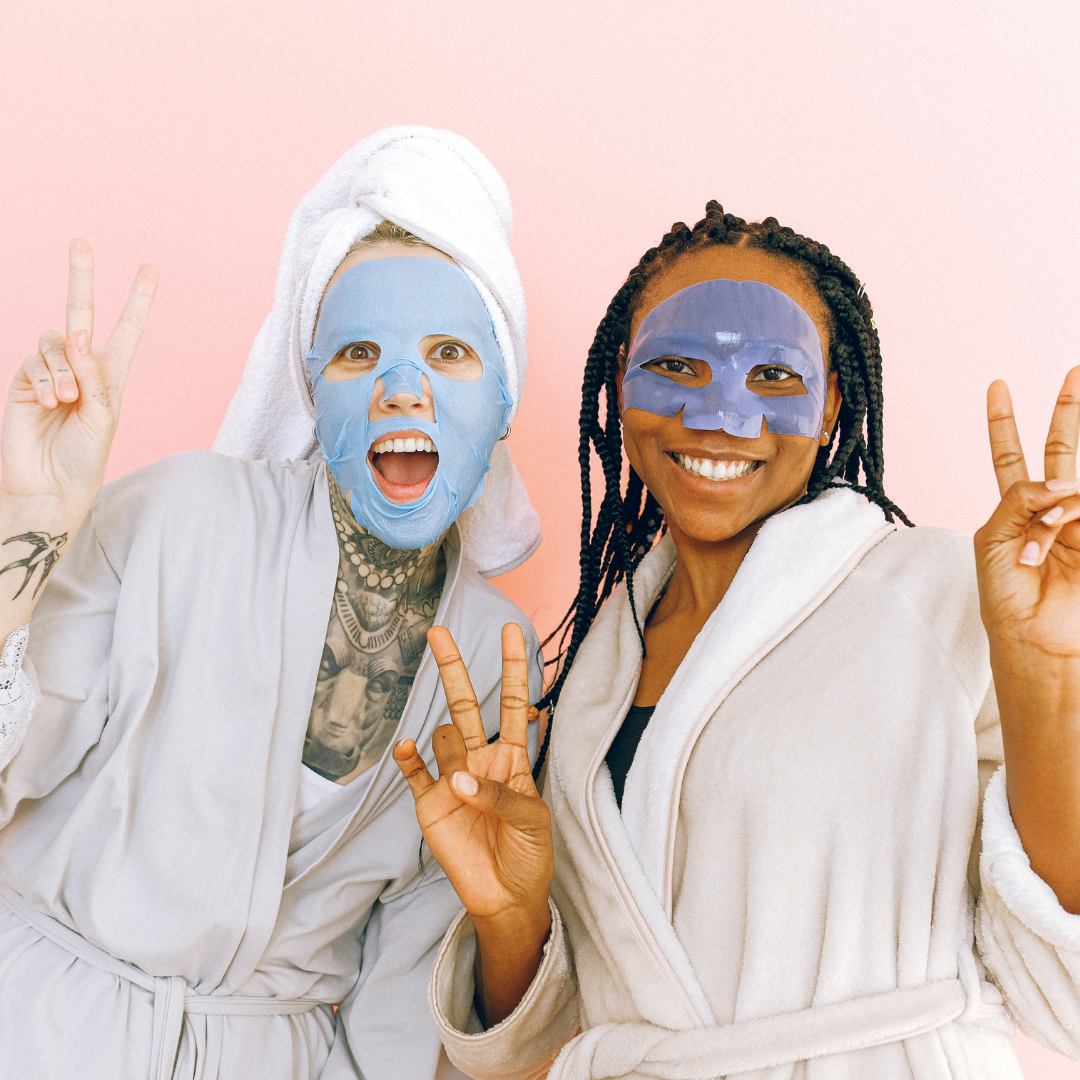Browse by Category
For decades, the retail landscape has transformed, having to reckon with its impact on the environment, health, and safety. Often, it has symbolized the political conversation and represented a way to vote with our dollars. This has never been more true than with the overturning of Roe v. Wade in June 2022. Abortion rights became front and center on the ballot, and the beauty industry started to pay attention.
The beauty space as we know it today is rife with misinformation. We often repeatedly hear the same myths – perpetuated by influencers and brands to support their marketing efforts or brand positioning. We're here to set the record straight – read on to learn the truth behind some of the most pervasive misconceptions in beauty.
With record-breaking temps across the country and smoky atmospheres due to wildfires in places like California (where we're based), the Skindie team has noticed increasingly unpredictable changes in our skin – including dryness and more breakouts of conditions like rosacea. A variety of environmental stressors seem to be catching up to us. Is it climate change, or just Autumn?
April Franzino is the Beauty Director of Good Housekeeping, Woman's Day, and Prevention magazines at Hearst Magazines. She produces and oversees each book's beauty editorial content, including pitching, reporting, writing, editing, and market work, culminating with yearly Beauty Awards specials, and also oversees beauty content on Goodhousekeeping.com. April represents the brands on television, radio, industry panels, and online, appearing on The Today Show, Good Morning America, CBS Mornings, The View, CNBC, NBC New York Live, The Dr. Oz Show, PIX11 News, and Today.com. She is also a host of the podcast Beauty Is Your Business.
Amazon Prime Day was this past week and if you’re like us you snagged a few good beauty deals worth boasting about to your friends or family. Some of the best-selling brands from the event in the U.S. included Laneige (think, their infamous Lip Sleeping Mask) and NuFace. It comes as no surprise though; articles about Prime Day this year were dime a dozen from what seemed like every beauty outlet on the internet (e.g., Allure, The Cut, Vogue, etc.) – each with their own curated list of products to buy. We don’t know about you but it made us think about how much the beauty buying experience has evolved and how we ultimately buy products today.
We don’t know what we love more – the founding story behind Burt’s Bees or their original, tried-and-true lip balm. Did you know the brand was founded in the early 1980s in Maine by Burt Shavitx and Roxanne Quimby? Both were former city dwellers (Manhattan and San Francisco) until Burt established a honey business in The Pine Tree State and they met by chance. In 1984 they started creating beeswax-based products like candles and then lip balm in 1991.
It’s Skin Cancer Awareness Month! With the summer season approaching and the continued spotlight on sunscreen in beauty routines, there are more face sunscreens to choose from than ever — especially sheer and tinted mineral SPFs. While clean beauty diehards have long-preferred these, they have not always provided the best user experience or catered well to skin of color. With recent safety concerns raised about chemical sunscreens, the demand for sheer mineral sunscreens has increased. So while chemical formulas were typically the gold-standard for sheerness that left no white cast on the skin, a new guard of mineral SPFs changes that. So as you get ready for some fun in the sun, here’s an overview of this expanding category as well as a round-up of our current faves.
Team Skindie offers a behind-the-scenes look at what it takes to launch a new beauty product involving key cross-functional teams: marketing, R&D, regulatory, and operations.
Savvy Skindies will recall that we shared a brief overview of Ayurveda-inspired skincare trends in our previous issue, South Asian Beauty Brands to Watch. Not only is growth in this space projected to reach almost $15B by 2026, established companies like Estee Lauder and Puig are investing heavily in Ayurvedic brands. While ingredients from South Asia and those commonly used in Ayurvedic practice have been in the market for decades, the trend has gone from niche to mainstream due to a strong synergy with the clean beauty movement and the demand for greater diversity and inclusion within the beauty industry. In today’s issue, we’re digging deeper into this ancient system of healing, exploring the brands and products currently in-market, and of course, sharing the science.
South Asian beauty or Indian (I-beauty), as some like to call it, is having a well deserved moment right now in the US (we’ll be referring to South Asian-owned brands founded here in the States). Many of these brands are rooted in Ayurveda — an ancient system of medicine and healing — or associated with the vibrancy and diversity of South Asian culture. Given the increasing prevalence of brands that speak to skin of color and inclusion efforts in the beauty industry, this movement is positioned to become a formidable trend in the coming years (especially since it tends to align with the values of the clean beauty movement). In fact, the global Ayurvedic products market is set to more than triple in growth to reach $14.9 billion by 2026.
Jasmina Aganovic is a cosmetics industry professional who is driving innovation in beauty. As the CEO of Arcaea, she leverages the power of expressive biology to create a new wave of beauty products that provide consumers with innovative and sustainably sourced ingredients. Prior to launching Arcaea, she was an Entrepreneur-in-Residence at Gingko Bioworks and the President of Mother Dirt, a skin microbiome brand that developed the first live probiotic and biome-friendly products for the skin. Jasmina has a degree in chemical and biological engineering from MIT.
For every action, there’s an equal and opposite reaction. The same goes for skincare. As the category exploded over the last several years with extravagant claims and storytelling, a backlash also ensued, calling for a return to the minimalist skincare of our youth. In our issue on back-to-basics skincare, we mentioned some products that we had in our arsenals back in the day (like Oil of Olay and Clean & Clear). As a follow-up, we wanted to share a round-up of drugstore OGs whose performance and appeal have stood the test of beauty time with over sixty years in the business.
Besides product classifications based on gender, the majority of the skincare industry is predicated on skin typing. Where do you fall on the Fitzpatrick scale? Are you dry, oily, combo, or sensitive? These systems often dictate our entire approach to skin care and were created to help us make better, smarter decisions when it comes to the care and treatment of our skin. But when we’re talking about our skincare products specifically, are the ones based on skin type significantly different?
Paul Baek is the founder and CEO of MATTER OF FACT, a clinical skincare brand focused on efficacy and innovation. He founded MATTER OF FACT in 2018 with the goal of developing novel delivery vehicles for well-researched ingredients. The first of these is a Vitamin C (ascorbic acid) technology that is able to solubilize high concentrations of ascorbic acid without the use of water, resulting in a highly stable, yet completely non-gritty and high-potency solution of Vitamin C.
Prior to founding MATTER OF FACT, Paul was involved in the startup and technology spaces, having worked at Atom Factory (investor in Warby Parker, Spotify and Ritual, amongst others). He is also a former recording artist, with 4 major releases in South Korea. He received his undergraduate degree from Harvard University, his MBA from The Wharton School, a master’s degree in international studies from the University of Pennsylvania, and studied cosmetic formulation under the tutelage of a veteran product developer.
As a word, urea suffers from some unsexy associations (urine and Uranus come to mind). As an ingredient, it doesn’t get nearly as much attention as hyaluronic acid or peptides. We at Skindie noticed a pattern — some of our favorite products like Clinique’s Dramatically Different Moisturizing Lotion+ featured an unsung hero in skincare formulation, urea. But as both a humectant and a chemical exfoliator, urea is a powerhouse ingredient that has been used in traditional skincare as well as clinical dermatology for decades — read on to find out why.
Hydration vs. moisturization is an ongoing topic of conversation in the skincare world. Social media influencers like Dr. Anjali Mahto, Hyram, and Susan Yara have all shed some light on the subject (showcasing varying degrees of technical prowess), while many beauty/lifestyle media platforms have done the same. Given it’s winter time and this theme is top of mind for many of us, we want to get our word out on the matter, too.
We thought we had seen it all in the beauty biz — until we heard about a lawsuit against Clinique and other brands claiming false advertising on products labelled “oil-free” (ICYMI, check out this Dr. Dray video for more info). Why the sudden controversy? Spurred by consumer demand for transparency and greenwashing, there’s an expectation that product claims and certifications are “official” and that they align exactly with what is found on an ingredient list or a brand’s marketing strategy.
I’m very lucky to have a career that I love – combining my background in science with my passion for cosmetics! I went to University College Dublin and achieved a BSc in Pharmacology before landing my dream job as a Graduate Scientist in Oriflame Cosmetics in Dublin. Today, I am a Senior Scientist in the Scientific Communication team, translating the science behind cosmetic technologies into exciting product claims and communication. This involves a huge range of activities which makes each day different and exciting – from claim substantiation and efficacy testing to video production, creative storytelling, social media demonstrations and more! I have been working in the cosmetics industry for over 5 years now and I specialise in the science behind colour technologies.
If you’ve heard of the skincare hack called slugging (thanks TikTok and Reddit) or already partake in this healing ritual, you know that petrolatum can be a true savior for those of us with very dry/irritated skin or a compromised skin barrier.
But petrolatum a.k.a petroleum jelly doesn’t need an elaborate introduction. We’re all pretty familiar with this classic, tried-and-true ingredient that has been used and loved for over a hundred years to remedy any and all skin related ailments.
Rachel ten Brink is the General Partner and Co-Founder of Red Bike Capital. Named Entrepreneur Magazine’s 100 Most Powerful Women of 2020, Rachel is a Founder, Board Member, Investor and Growth expert. Rachel was a Partner at Five Four Ventures. She was Co-Founder and CMO of Scentbird, a Y-Combinator backed ecommerce startup that raised $29MM in venture funding. Rachel led growth, brand and revenue, scaling the company to over half a million monthly paying subscribers. Before this, she spent 20 years at top global companies building billion-brands at Elizabeth Arden, Estee Lauder, Gillette and L’Oreal. She is a mentor at Y-Combinator, 500 Startups, Techstars and others, and was recognized as Top 50 Latinx Tech Leaders in the US.
In Part 1 of our series on fermentation in skincare, you got through the basics — what fermentation is and where we see it in skincare. ICMYI — just remember that 1) fermentation is a process in which microorganisms (like yeast and bacteria) allow complex, organic substances to become simpler compounds in the absence of oxygen (anaerobic fermentation) and 2) fermentation takes place in specific conditions, making it useful to food, cosmetic, and biotech product development. Now, let’s tackle the why of its prevalence in skincare.
Whether you’ve been on a kombucha or kimchi kick to improve your gut health or love Asian beauty brands, you’re probably aware of fermented ingredients in skincare and why they’re so popular. While the trend is definitely not new, we continue to see products on the market that claim to be special due to fermentation. Some even sound downright good enough to eat — like Drunk Elephant Sweet Biome Fermented Sake Hydrating Spray and Fresh Kombucha Antioxidant Treatment Essence. Curious to learn what’s fueling the trend and how fermented drinks entered both your fridge and skincare routine? Read on for Part 1 of our series on fermentation in skincare, in which we’ll cover some basics.
Boo! Spooked by the sight of a fellow skindie unexpectedly donning a sheet mask? Whether it’s on IG or a viral video, masks have a visual appeal that makes them irresistible (like the OG GlamGlow or Boscia peel-off Luminizing Black Mask) and are also a self-care go-to. They’re a noun, they’re a verb (including multi-masking!) — they’re everywhere. This Halloween, whether we’re tagging our masks for #selfcaresunday or for a costume, let’s take a look at what they do and if we really need them.
This is our first-ever edition of product recs. We tested a lot (a lot) of new product but only four made the cut. We asked ourselves three questions: Is it a unique formula? Does it work? And do we like using it?
What’s your number? And by that we mean...how many products are in your current skincare routine?! Whether you’re a beauty junkie or a minimalist, everyone seems confused about how to approach their skincare — even Lilly Singh. There was a time when drugstore brands like Noxzema and Neutrogena reigned supreme, Clinique was almost a luxury, and even though Baz Luhrmann’s wear sunscreen song was a hit, there was no actual sunscreen shaming in sight. As we approach Fall/Winter and make some tweaks to our routines, we’re craving the simplicity of Dr. Dray’s 90s skincare routine and wondering how it all got so complicated.
I have a BS in chemistry and I’ve been working in the beauty/personal care industry for just under 2 years. I began working as a technical service chemist at a raw materials supplier and now I’ve found my place as an associate scientist in analytical chemistry at J&J Consumer. On a typical day you can find me in the lab developing a test method for active ingredients in skin health product prototypes. You’ll also find me tuning into a project meeting for a new product launch and giving updates on how stability studies are going to support the product’s shelf life specifications.
For some of us, the end-of-summer blues has officially kicked in along with some unwelcome changes in our skin if you’ve spent prolonged periods of time outdoors. The result of frequent sun exposure can manifest as pesky dark spots, among other things. Even for the most dedicated SPF-wearers. Whether sun-induced, ghosts of acne past, or other, hyperpigmentation can be extremely stubborn.
Our very first newsletter covered trends we wanted to see out the door in 2021, including over-exfoliation, derma-rollers, celebrity skincare, micro fridges, and fear-mongering and misinformation within the beauty industry. As we make our way into fall, we wanted to do a recap on...what stuck around, what’s new, and what more can we expect? Let’s revisit what’s been going on since.
Jen Novakovich is an independent cosmetic scientist, science communicator, and director of The Eco Well, a science communication platform and formulation development consultancy. With her work as a science communicator, she's interviewed hundreds of scientists from diverse fields for her podcast, hosts regular interdisciplinary e-panels on her YouTube channel, and has launched several larger-scale scicomm conferences, including the Green Beauty Night series. Jen has two BS degrees, a diploma in cosmetic chemistry, and is in the process of completing a master's in environmental science.































Dr. Barbara Paldus is the Founder & CEO of Codex Labs – a Silicon Valley-based company with proven clinical results founded on sustainability – from formulation to packaging. Barbara holds over 40 U.S. patents and is an investor and serial entrepreneur, having started companies like Picarro, which detects greenhouse gas for climate change, and Finesse Solutions, which specializes in biotechnology equipment for vaccines, cancer therapeutics, and cell therapy.
Canadian-born of Czech parents, Barbara was raised in both Europe and Canada, is fluent in five languages with a Ph.D. from Stanford University, and considers herself a global citizen. As a scientist, she believes in data and biotechnology.